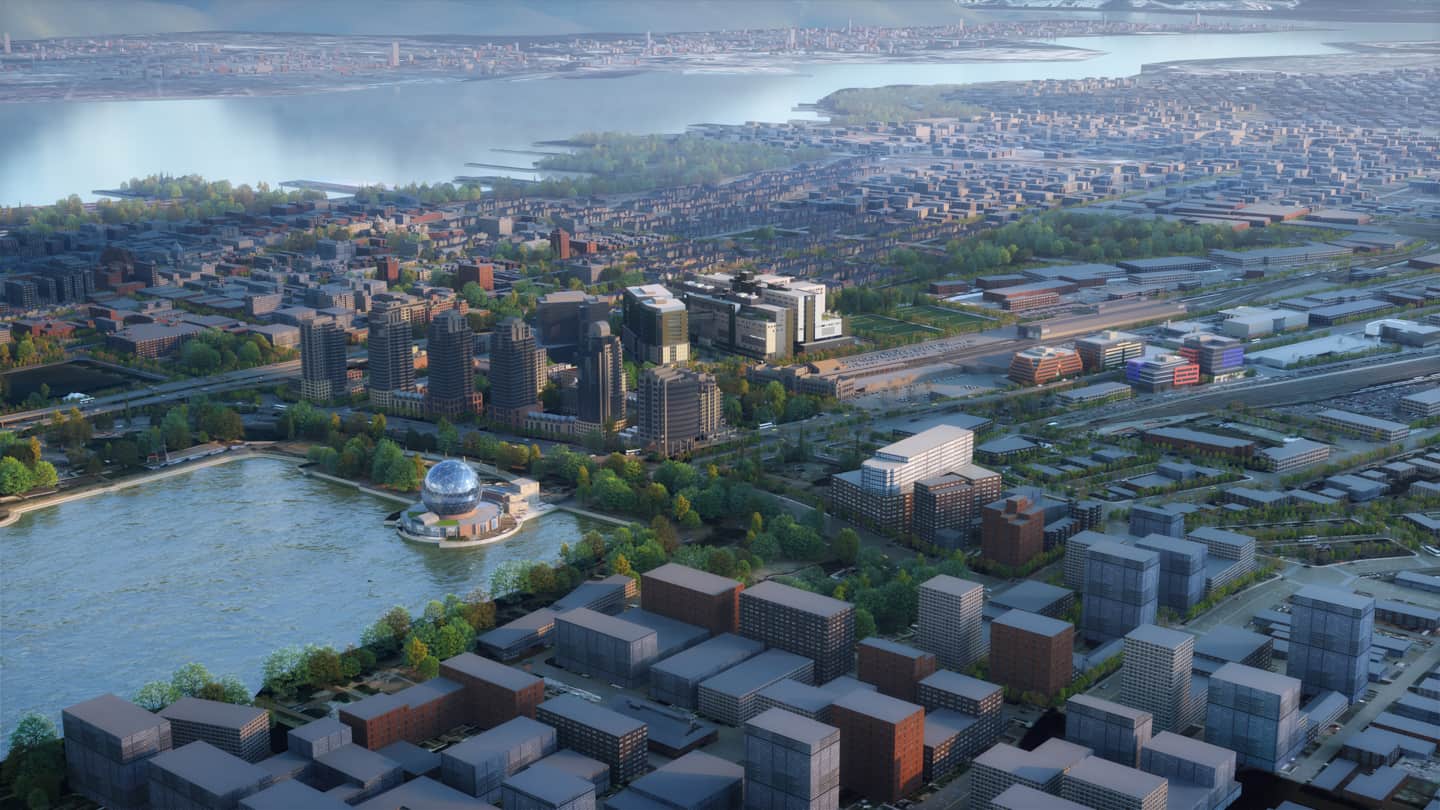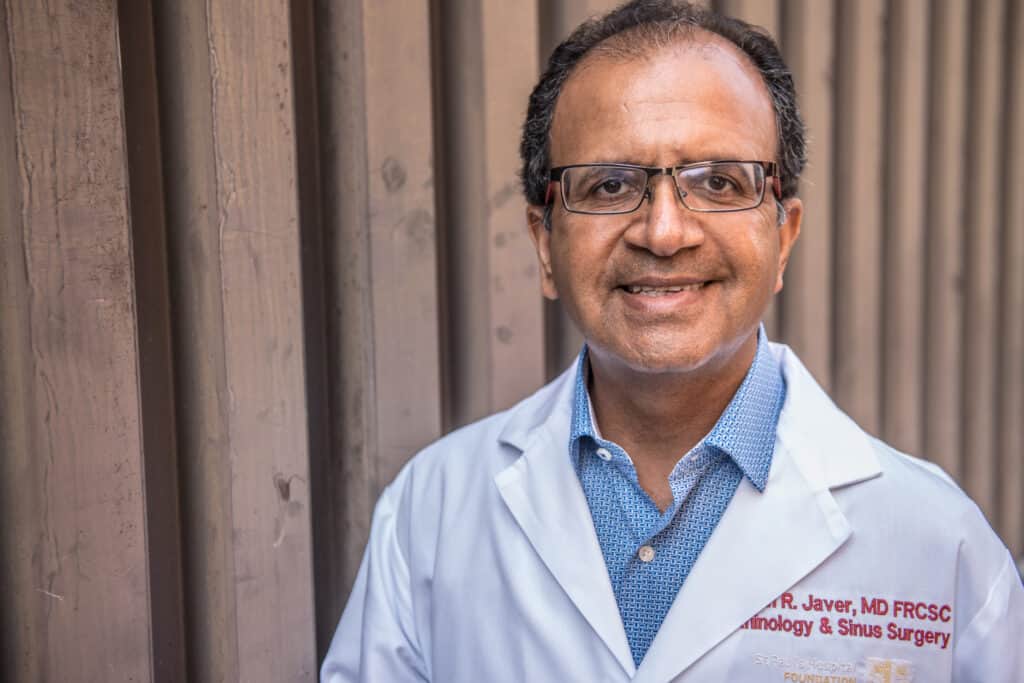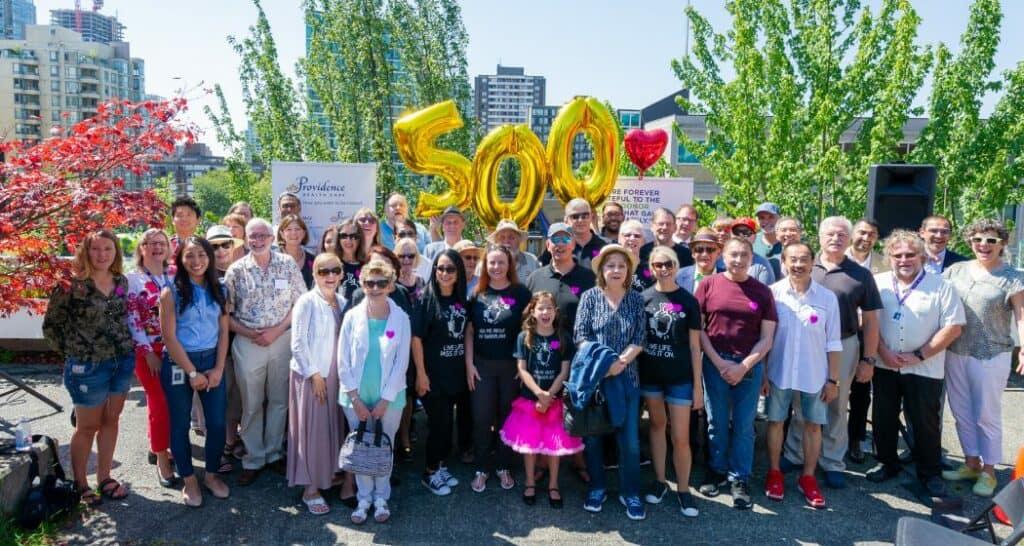Published Promise 2018
When the Sisters of Providence founded St. Paul’s to help those most in need, they were guided by a simple truth: If not us, who? If not now, when? Almost 125 years later, the team spearheading the new integrated health care campus feels exactly the same way. And they’re not just enthusiastic about the transformation of care for patients, caregivers, and researchers; they’re looking at it through a much wider lens.
Dick Vollet, president and CEO of St. Paul’s Foundation, explains: “The new St. Paul’s isn’t just about moving the hospital from Burrard Street to Station Street. It’s about transforming the city itself.” That might sound a little lofty, but it’s absolutely true. The new campus sits at the gateway to False Creek Flats, an area the city has specifically designated as a hub for health care, R&D, technology and education. Indeed, the City of Vancouver expects the number of jobs in the area will grow from 8,000 to 30,000 over the next 30 years. With that will come housing, arts and culture, and green spaces…the very definition of a transformation.
Foundation board member Paul Hollands, who chairs the new St. Paul’s Campaign Committee, couldn’t agree more. “In a community’s life, there are few chances to really change the trajectory of its success. The new St. Paul’s is one of those opportunities. It will not only impact health care structurally, it will fundamentally change the city’s social and economic success.” Hollands, also board chairman of A&W Food Services of Canada, sees this as a watershed moment. “In 10 years, we will look back on the new St. Paul’s and recognize it as a turning point for transformational health care in BC and beyond.”
Transforming the city
One of the things that most inspires PHC president and CEO Fiona Dalton is the expansive scope of the project.
“We have an extremely rare opportunity to build on a greenfield site in the city centre. We get to start from scratch and build a hospital for the 21st century whilst remaining true to our core philosophies of compassion, social justice and innovation.” It’s so compelling, Dalton moved from the UK to lead it.
Kathryn Young, board chair of St. Paul’s Foundation, adds that the campus itself will inspire transformation and discovery. “A facility of this calibre will attract top research talent from all over the world, sparking a circle of new breakthroughs bringing more funding and more talent. And with the entire campus purpose-built to encourage collaboration between clinicians, researchers, and industry partners, discoveries will travel more quickly from the lab to the clinic. Not just here, but across Canada and internationally.”
“Of course,” she quickly notes, “the culture of caring for everyone in need, especially the most vulnerable, will continue to underpin everything just as it always has.”
She’s right: Providence Health Care was there in the 1890s for the gold prospectors on their way to the Klondike; in the 1920s for the growing community of sick and indigent Chinese workers ostracized by the attitudes of the day; and in the 1980s for those stricken with the mysterious wasting disease that would eventually be identified as HIV/AIDS.

Transforming care
Looking back at the AIDS crisis and St. Paul’s courageous leadership during a time of widespread fear and ignorance offers a promising glimpse into the future of health care at the new campus.
It started when the first symptomatic patients arrived at St. Paul’s in 1982. Across North America, other hospitals turned them away; St. Paul’s threw open the doors. As the crisis deepened, so did the outreach and the compassion.
In just 10 years, these grassroots efforts transformed into the BC Centre for Excellence in HIV/AIDS (BC-CfE). Today, under the leadership of Dr. Julio Montaner, the BC-CfE’s
game-changing highly active antiretroviral therapy (HAART) and the Treatment as Prevention (TasP) strategy he pioneered, HIV has turned from a swift death sentence into a chronic, manageable disease. Further, HAART has proven to stop HIV transmission. It’s so effective, the strategy has been adopted by both the World Health Organization and the United Nations for use around the world.
“The BC-CfE is amazing, and it’s just one of many examples of how St. Paul’s has stepped up to provide leadership in our community and beyond,” says Young. “It’s also a poignant example of how the care at St. Paul’s has always been – and always will be – steeped in compassion.”
Transforming the future
Providence Health Care has a long history of paving the way for innovative programs that transform care for people here and around the world.
Consider the provincial Heart Centre at St. Paul’s. It is the only adult heart transplant service in BC. It is also home to the revolutionary TAVI (Transcatheter Aortic Valve Implantation) procedure that allows heart valves to be repaired through an incision near the groin instead of via open-heart surgery. TAVI has become the global gold standard for non-invasive valve repair and the team at the Heart Centre live-streams the procedure to train medical professionals around the world.
St. Paul’s multi-disciplinary maternity and obstetrics program is the provincial referral centre for women with the most complex, high-risk pregnancies. The Kidney Care Clinic is the longest-running program of its kind in Canada. The Centre for Heart Lung Innovation is ranked first in Canada, and third worldwide, for its expertise in COPD (chronic obstructive pulmonary disease) and asthma. The BC Centre on Substance Use (BCCSU) is a world-class research facility at the forefront of the current opioid crisis. And that’s just a short highlight reel.
“We’ve achieved so many health care firsts at St. Paul’s, you could say that the quest for excellence and innovation is baked right into our organization. And that will absolutely carry over to the new St. Paul’s,” says Eric Harris, chair of the PHC board of directors. “With our amazing team of physicians and health care workers, the new facility will enable us to do even more than we can do today.” For example, the hospital will include dedicated spaces for mental health, healthy aging, and Indigenous health.
Vollet speaks for everyone on the leadership team when he says, “I’m constantly amazed by the work that gets done in the current facility. No matter what you’re here for, no matter how sick or vulnerable you are, you are the most important person in the hospital.”
“I look at the new St. Paul’s as an incredible opportunity for a purpose built space that will become one of the most effective, efficient health care facilities in Canada – a place where you’ll want to come if you’re sick. Where you’ll want to bring your loved ones when they need care. A place that will transform health care in our community, our country, and around the world for decades to come.”
When you think about it, the founding Sisters could have said the same thing all those years ago.
It’s amazing just how far our grasp can reach when we stand together. The new St. Paul’s is our opportunity to stand together as a community. Support the next century of compassionate, innovative care. Please give at helpstpauls.com/newstpauls.



